243 Other Terriers
THE "OTHER" TERRIERS
by David Hancock
 The list of terrier breeds as recognised by the Kennel Club could have looked so very different had fate played another role. In place of famous breed names like the Sealyham, Scottish, Welsh, Irish, Border, Norfolk and Parson Jack Russell terrier, we could so easily have ended up with the Trumpington, Cowley, Bewcastle, Elterwater, Suffolk, Will Norris and Squire Poole terrier. In the early nineteenth century, many localities, even some valleys, had their own favoured type of terrier, some of which became swept up in a distinct form we now call a breed. A comparable situation occurred in other types of dog in other countries, as the mountain dogs of Switzerland: Bernese, Appenzeller, Entlebucher and Great Swiss illustrate. The setter breeds provide another example of surviving breeds representing today the much wider range of colours and types which existed in the last century, as the milk-white Llanidloes, the liver and white of Naworth and Featherstone Castles, the tricolour of Lord Lovatt and the Earl of Southesk and the jet black of Lord Ossulston
The list of terrier breeds as recognised by the Kennel Club could have looked so very different had fate played another role. In place of famous breed names like the Sealyham, Scottish, Welsh, Irish, Border, Norfolk and Parson Jack Russell terrier, we could so easily have ended up with the Trumpington, Cowley, Bewcastle, Elterwater, Suffolk, Will Norris and Squire Poole terrier. In the early nineteenth century, many localities, even some valleys, had their own favoured type of terrier, some of which became swept up in a distinct form we now call a breed. A comparable situation occurred in other types of dog in other countries, as the mountain dogs of Switzerland: Bernese, Appenzeller, Entlebucher and Great Swiss illustrate. The setter breeds provide another example of surviving breeds representing today the much wider range of colours and types which existed in the last century, as the milk-white Llanidloes, the liver and white of Naworth and Featherstone Castles, the tricolour of Lord Lovatt and the Earl of Southesk and the jet black of Lord Ossulston 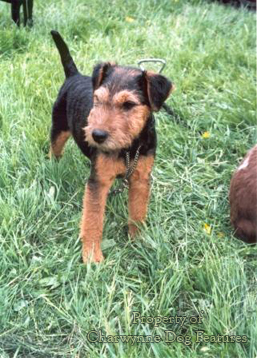 once did. Not much has been written about the terrier types which did not achieve KC breed status, mainly because terrier work was not a job for the educated monied classes who could have written books about them. As a consequence, it is probably easier to research just one setter breed than all of our lost terrier breeds, such is the disparity of written material. In his 'The Terriers' of 1896, a volume in his Modern Dogs series, Rawdon Lee does make reference to the little known types of terrier found then. One of his illustrations is by Arthur Wardle and depicts 'Other Working Terriers'. The working terrier fraternity of Rawdon Lee's time could have provided evidence of ten or twenty additional "breeds". Sadly, a comparable depiction today would be more likely to feature Schnauzers, Pinschers, Dachshunds and the German Hunt Terrier, such is the domination of breeds originating in Germany in Britain in the 1990s. But now, just in time, as the next millennium approaches, the working terrier breeders, who never follow fad or fashion, are at work again. Just as a working Clumber Spaniel, half the weight of the show dog and with sounder hips and eyes, is being promoted, so too are recast working Sealyhams and Bedlingtons, a resurrected Lucas Terrier and a new breed, the Plummer Terrier. The Plummer Terrier, named after its creator: schoolmaster turned writer, the late Brian Plummer, author of at least a dozen books, mainly on lurchers and terriers, is steadily gaining ground. Between 11½ and 13½ inches at the shoulder, smooth coated, with a head displaying signs of both Bull Terrier and Fox Terrier ancestry and a striking fiery
once did. Not much has been written about the terrier types which did not achieve KC breed status, mainly because terrier work was not a job for the educated monied classes who could have written books about them. As a consequence, it is probably easier to research just one setter breed than all of our lost terrier breeds, such is the disparity of written material. In his 'The Terriers' of 1896, a volume in his Modern Dogs series, Rawdon Lee does make reference to the little known types of terrier found then. One of his illustrations is by Arthur Wardle and depicts 'Other Working Terriers'. The working terrier fraternity of Rawdon Lee's time could have provided evidence of ten or twenty additional "breeds". Sadly, a comparable depiction today would be more likely to feature Schnauzers, Pinschers, Dachshunds and the German Hunt Terrier, such is the domination of breeds originating in Germany in Britain in the 1990s. But now, just in time, as the next millennium approaches, the working terrier breeders, who never follow fad or fashion, are at work again. Just as a working Clumber Spaniel, half the weight of the show dog and with sounder hips and eyes, is being promoted, so too are recast working Sealyhams and Bedlingtons, a resurrected Lucas Terrier and a new breed, the Plummer Terrier. The Plummer Terrier, named after its creator: schoolmaster turned writer, the late Brian Plummer, author of at least a dozen books, mainly on lurchers and terriers, is steadily gaining ground. Between 11½ and 13½ inches at the shoulder, smooth coated, with a head displaying signs of both Bull Terrier and Fox Terrier ancestry and a striking fiery 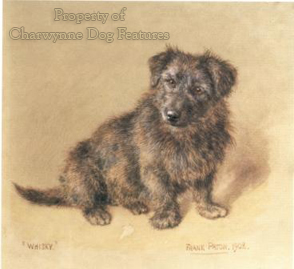 tan colour with white finching, these dogs were developed in a hard school and now breed consistently true to type. There is a breed club, a stud book going back to the early 1950s and an annual show in July. The breed club is affiliated to the British Field Sports Society and John Winch, a Northumberland barrister with a long interest and high standing in working terrier circles, is its president. Both the Plummer Terrier and the Lucas Terrier enthusiasts observe a written and approved breed standard and have sensible breeding plans. Most of the Plummers have been sired by working terriers owned by professional terriermen working for foxhound packs. They have exceptional noses and it would be difficult to find better ratters. One is being used to track deer, rather as the Germans use their 'teckels'. They can display what French huntsmen would term 'excessivement meurtrier' or be, more euphemistically, determined vermin-killers. They are certainly not dogs for elderly spinsters in Reigate! The Lucas Terrier was described by its creator Sir Jocelyn Lucas, famous for his Ilmer kennel of Sealyhams, as "death on rats and rabbits", and this too is no ornamental breed. Seeking a smaller working Sealyham, Sir Jocelyn outcrossed to a red Norwich Terrier, and, finding the crossbred puppies so attractive he set to in an attempt to stabilise this type. The Lucas Terrier enthusiasts of today are completing his unfinished work. They are producing hard-jacketed foot-high strong-headed terriers, either white bodied with darker markings or coloured in body, all shades of brown, black and tan and grizzl
tan colour with white finching, these dogs were developed in a hard school and now breed consistently true to type. There is a breed club, a stud book going back to the early 1950s and an annual show in July. The breed club is affiliated to the British Field Sports Society and John Winch, a Northumberland barrister with a long interest and high standing in working terrier circles, is its president. Both the Plummer Terrier and the Lucas Terrier enthusiasts observe a written and approved breed standard and have sensible breeding plans. Most of the Plummers have been sired by working terriers owned by professional terriermen working for foxhound packs. They have exceptional noses and it would be difficult to find better ratters. One is being used to track deer, rather as the Germans use their 'teckels'. They can display what French huntsmen would term 'excessivement meurtrier' or be, more euphemistically, determined vermin-killers. They are certainly not dogs for elderly spinsters in Reigate! The Lucas Terrier was described by its creator Sir Jocelyn Lucas, famous for his Ilmer kennel of Sealyhams, as "death on rats and rabbits", and this too is no ornamental breed. Seeking a smaller working Sealyham, Sir Jocelyn outcrossed to a red Norwich Terrier, and, finding the crossbred puppies so attractive he set to in an attempt to stabilise this type. The Lucas Terrier enthusiasts of today are completing his unfinished work. They are producing hard-jacketed foot-high strong-headed terriers, either white bodied with darker markings or coloured in body, all shades of brown, black and tan and grizzl e and tan. They are fearless without being fighters,and, thankfully for terriers bred from game stock, not -- in the words of their breed standard -- 'overly noisy.' Sadly the well-intentioned skilful breeders of these two carefully-bred terrier breeds will get no official encouragement here. We are too busy recognising the newly-introduced Cesky Terrier, produced overseas from our Sealyham's blood. Yet the terrier breeds are essentially British, very much part of our sporting heritage. Paradoxically, this indifference from above may, in the long run, turn out to be no bad thing. The show ring has reduced so many of our native terrier breeds to over-coated lap-dogs, usually with upright shoulders and lacking that suppleness in the back so important to an earthdog. The critiques from show ring terrier judges make my point for me. Here are some of those: West Highland White Terriers (at Crufts 1996) -- "The other faults I found appalling were the number of very dodgy mouths, along with very poor construction. To think these dogs had to qualify in order to enter Crufts leaves me speechless." Cairn Terriers (at Crufts 1995) -- "I was very disappointed with the movement of our own dogs which caused me great problems. I was also disappointed yet again to see a number of untypical heads and,
e and tan. They are fearless without being fighters,and, thankfully for terriers bred from game stock, not -- in the words of their breed standard -- 'overly noisy.' Sadly the well-intentioned skilful breeders of these two carefully-bred terrier breeds will get no official encouragement here. We are too busy recognising the newly-introduced Cesky Terrier, produced overseas from our Sealyham's blood. Yet the terrier breeds are essentially British, very much part of our sporting heritage. Paradoxically, this indifference from above may, in the long run, turn out to be no bad thing. The show ring has reduced so many of our native terrier breeds to over-coated lap-dogs, usually with upright shoulders and lacking that suppleness in the back so important to an earthdog. The critiques from show ring terrier judges make my point for me. Here are some of those: West Highland White Terriers (at Crufts 1996) -- "The other faults I found appalling were the number of very dodgy mouths, along with very poor construction. To think these dogs had to qualify in order to enter Crufts leaves me speechless." Cairn Terriers (at Crufts 1995) -- "I was very disappointed with the movement of our own dogs which caused me great problems. I was also disappointed yet again to see a number of untypical heads and, 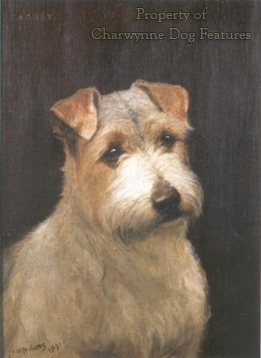 surprisingly, unacceptable or suspect mouths, even in some exhibits who have won well." Parson Jack Russell Terriers (at Crufts 1995) -- "Some do lack bone and there were thin feet." Glen of Imaal Terriers (at Crufts 1995) -- "...it was a surprise to find so many bad mouths at such a show as Crufts. Also there was some hint at deformity of the ribs." If these are the KC-registered pedigree terriers which qualify for Crufts, what are the rest like? Yet if the Plummer and Lucas Terrier devotees seek official recognition for their dogs, however unwise that may be, they will receive little but scorn, including some from individuals breeding the dogs described above. These two emerging terrier breeds are too precious to be put at risk; the step from show ring debut to being the most popular breeds for puppy-farmers, as Westies and Yorkies now are, is a worryingly short one. I see some Parson Jack Russell Terriers at KC shows which could still work. But I also see some that are shelly, slab-sided, too short in the back and with poor feet and snipey muzzles. The movement of so many terriers at KC shows is desperately worrying, but then how can any dog move well when it's strung up on too taut a lead with its front legs only skimming the ground? Ironically, it was Sir Jocelyn Lucas's disillusionment with the show Sealyham which inspired his outcross to the Norfolk. Finding them too big, too cloddy, over-furnished and with disappointing temperament and whelping difficulties, he sought a smaller-headed harsh-coated but not excessively coated input and went for the then scarcely-known (outside their native county) Norfolk Terrier. His working lines had been based on a dozen 'mini-Sealyh
surprisingly, unacceptable or suspect mouths, even in some exhibits who have won well." Parson Jack Russell Terriers (at Crufts 1995) -- "Some do lack bone and there were thin feet." Glen of Imaal Terriers (at Crufts 1995) -- "...it was a surprise to find so many bad mouths at such a show as Crufts. Also there was some hint at deformity of the ribs." If these are the KC-registered pedigree terriers which qualify for Crufts, what are the rest like? Yet if the Plummer and Lucas Terrier devotees seek official recognition for their dogs, however unwise that may be, they will receive little but scorn, including some from individuals breeding the dogs described above. These two emerging terrier breeds are too precious to be put at risk; the step from show ring debut to being the most popular breeds for puppy-farmers, as Westies and Yorkies now are, is a worryingly short one. I see some Parson Jack Russell Terriers at KC shows which could still work. But I also see some that are shelly, slab-sided, too short in the back and with poor feet and snipey muzzles. The movement of so many terriers at KC shows is desperately worrying, but then how can any dog move well when it's strung up on too taut a lead with its front legs only skimming the ground? Ironically, it was Sir Jocelyn Lucas's disillusionment with the show Sealyham which inspired his outcross to the Norfolk. Finding them too big, too cloddy, over-furnished and with disappointing temperament and whelping difficulties, he sought a smaller-headed harsh-coated but not excessively coated input and went for the then scarcely-known (outside their native county) Norfolk Terrier. His working lines had been based on a dozen 'mini-Sealyh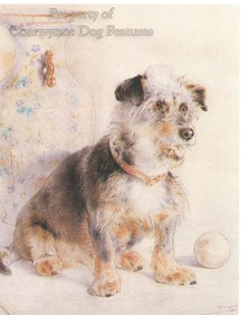 ams' from the Master of the Pembrokeshire Foxhounds, subsequently blended with the renowned Gladdish Hulke'sstoat-hunting working terrier pack, which Sir Jocelyn bought. The Lucas Terrier struggled on until the early 1990s but then lost type and virility and Brian Plummer's advice was sought, leading to the use of Sealyham blood. The breed has since been relaunched on the same formula as Sir Jocelyn used: small Sealyhams mated with two carefully chosen Norfolks, plus the blood of a surviving Lucas dog. The breeding programme has now been operating for four years and the type desired just about fixed. Brian Plummer has therefore been the guiding hand behind both these quite exciting new entries to the working terrier breed lists. His knowledge of genetics, his extensive experience with working terriers and his intellectual energy has given us a chance to regain our international reputation as working terrier breeders. His dogged persistence in producing his own breed after many setbacks and mishaps is a lesson to all would-be dog breeders. If you look at the early photographs of the prototypal dogs in just about every KC-recognised terrier breed (with the notable exception of the Border Terrier and perhaps the Cairn) and then compare them with contemporary dogs, you will soon see how far they have wandered from their own original type. With a closed gene pool in every KC-registered breed, how can this divergence be remedied? With so many worrying inherited diseases manifesting themselves in our pedigree terrier breeds, what breeding programmes are being scientifically planned to breedthem out -- such as outcrosses to other more virile breeds? We need the enlightenedapproach of individuals like Brian Plummer if informed initiatives are to betaken. Our breeds of dog came to us as the result of the single-mindedness, commitment, dogged determination and skill of individuals, not
ams' from the Master of the Pembrokeshire Foxhounds, subsequently blended with the renowned Gladdish Hulke'sstoat-hunting working terrier pack, which Sir Jocelyn bought. The Lucas Terrier struggled on until the early 1990s but then lost type and virility and Brian Plummer's advice was sought, leading to the use of Sealyham blood. The breed has since been relaunched on the same formula as Sir Jocelyn used: small Sealyhams mated with two carefully chosen Norfolks, plus the blood of a surviving Lucas dog. The breeding programme has now been operating for four years and the type desired just about fixed. Brian Plummer has therefore been the guiding hand behind both these quite exciting new entries to the working terrier breed lists. His knowledge of genetics, his extensive experience with working terriers and his intellectual energy has given us a chance to regain our international reputation as working terrier breeders. His dogged persistence in producing his own breed after many setbacks and mishaps is a lesson to all would-be dog breeders. If you look at the early photographs of the prototypal dogs in just about every KC-recognised terrier breed (with the notable exception of the Border Terrier and perhaps the Cairn) and then compare them with contemporary dogs, you will soon see how far they have wandered from their own original type. With a closed gene pool in every KC-registered breed, how can this divergence be remedied? With so many worrying inherited diseases manifesting themselves in our pedigree terrier breeds, what breeding programmes are being scientifically planned to breedthem out -- such as outcrosses to other more virile breeds? We need the enlightenedapproach of individuals like Brian Plummer if informed initiatives are to betaken. Our breeds of dog came to us as the result of the single-mindedness, commitment, dogged determination and skill of individuals, not 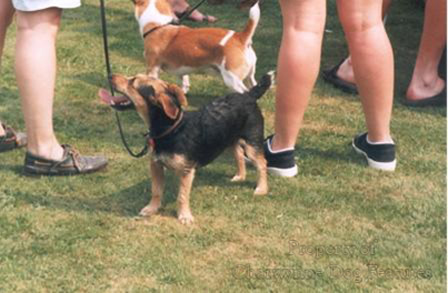 clubs or committees. I take my hat off to the admirable individuals who are striving to produce the Lucas and Plummer Terriers; unlike many of us their efforts will still be appreciated long after their time is up. With the KC registration lists increasingly dominated by foreign breeds, it is so encouraging to see British dogs being championed, to see British terriers being promoted and to see working capabilities being respected. Every terrier breed, to justify the name, must be bred with the ability and the anatomy to work, even if they are not required to do so. There is growing up in this country at the moment at least one generation which has never experienced the joy of working a hedgerow with a pair of happy terriers, never witnessed the excitement of ratting in a barn or, as Brian Plummer's terrier pack used to, in a maggot factory! No teenager with his own terrier is ever going to complain of being bored. Anyone brave enough to own a Plummer Terrier is going to have to love a challenge! Anyone wishing to own a highly-individual Lucas Terrier will be wanting to join a quite admirable group of true terrier lovers on a most worthy quest. Here's to the future success of the Plummer Terrier and the Lucas Terrier and those associated with their emergence.
clubs or committees. I take my hat off to the admirable individuals who are striving to produce the Lucas and Plummer Terriers; unlike many of us their efforts will still be appreciated long after their time is up. With the KC registration lists increasingly dominated by foreign breeds, it is so encouraging to see British dogs being championed, to see British terriers being promoted and to see working capabilities being respected. Every terrier breed, to justify the name, must be bred with the ability and the anatomy to work, even if they are not required to do so. There is growing up in this country at the moment at least one generation which has never experienced the joy of working a hedgerow with a pair of happy terriers, never witnessed the excitement of ratting in a barn or, as Brian Plummer's terrier pack used to, in a maggot factory! No teenager with his own terrier is ever going to complain of being bored. Anyone brave enough to own a Plummer Terrier is going to have to love a challenge! Anyone wishing to own a highly-individual Lucas Terrier will be wanting to join a quite admirable group of true terrier lovers on a most worthy quest. Here's to the future success of the Plummer Terrier and the Lucas Terrier and those associated with their emergence.